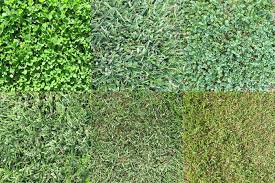Top 10 Essential Tips for a Healthy and Beautiful Lawn
Nothing amplifies the beauty of a home more than a vibrant, lush lawn. It’s not just about the aesthetic appeal, but a well-maintained lawn also offers a sense of tranquility and a space for family fun. However, achieving that picture-perfect lawn requires some work, knowledge, and dedication. Here are the top 10 essential tips to help you on your journey to a healthier and beautiful lawn.
- 1. Understand Your Soil: Before you start, it’s crucial to understand your soil type. Different soils require different care. Conduct a soil test to determine the pH and nutrient availability in your lawn. This will guide you in choosing the right fertilizers and treatments.
2. Choose the Right Grass: The type of grass you plant matters. Certain species thrive in certain climates and soil conditions better than others. Research and choose a grass type that is well-suited to your location and soil type.
3. Watering Wisely: Water deeply but infrequently. This encourages the grass to grow deeper roots, making it more drought-resistant. The best time to water your lawn is early in the morning, as less water will evaporate than during the hottest parts of the day.
4. Mow Properly: Don’t cut your grass too short. Taller grass shades the soil, reducing water evaporation and preventing weed growth. As a general rule, never remove more than one-third of the grass blade length at a time.
5. Fertilize Right: Use a slow-release fertilizer to feed your lawn. The timing and frequency of fertilization depend on the type of grass you have. Over-fertilization can lead to disease and weed problems, so be careful not to overdo it.
6. Aerate Your Lawn: Aeration is the process of making small holes in the soil to allow air, water, and nutrients to penetrate the grass roots. This helps the roots to grow deeply, resulting in a healthier lawn.
7. Deal with Weeds: Weeds can be a nuisance, robbing your grass of essential nutrients. Deal with weeds as soon as they appear, either by manual removal or using herbicides. 8. Monitor for Pests and Diseases: Regularly check your lawn for signs of pests or diseases. Early detection can prevent minor issues from turning into major problems.
9. Seasonal Care: Your lawn care routine should change with the seasons. What your lawn needs in spring is different from what it needs in fall. Be sure to adapt your lawn care practices accordingly.
10. Patience is Key: Lastly, remember that lawn care is a gradual process. Don’t expect overnight results. With consistent care and maintenance, your lawn will gradually become healthier and more beautiful. Creating a beautiful lawn is both an art and a science. These tips offer a good starting point, but remember that every lawn is unique. Pay attention to how your lawn responds to different treatments and adjust your approach as needed.
Happy Gardening!
Crafting Informative and Cohesive Body Content
Within the body of your blog post lies the heart of your message. Break down your content into coherent sections, each with a clear heading that guides readers through the narrative. Dive deep into each subtopic, providing valuable insights, data, and relatable examples. Maintain a logical flow between paragraphs using transitions, ensuring that each point naturally progresses to the next. By structuring your body content effectively, you keep readers engaged and eager to learn more.
Powerful Closures: Leaving a Lasting Impression
Concluding your blog post isn’t just about wrapping things up – it’s your final opportunity to leave a strong impact. Summarize the key takeaways from your post, reinforcing your main points. If relevant, provide actionable solutions or thought-provoking questions to keep readers thinking beyond the post. Encourage engagement by inviting comments, questions, or sharing. A well-crafted conclusion should linger in your readers’ minds, inspiring them to explore further or apply what they’ve learned.


